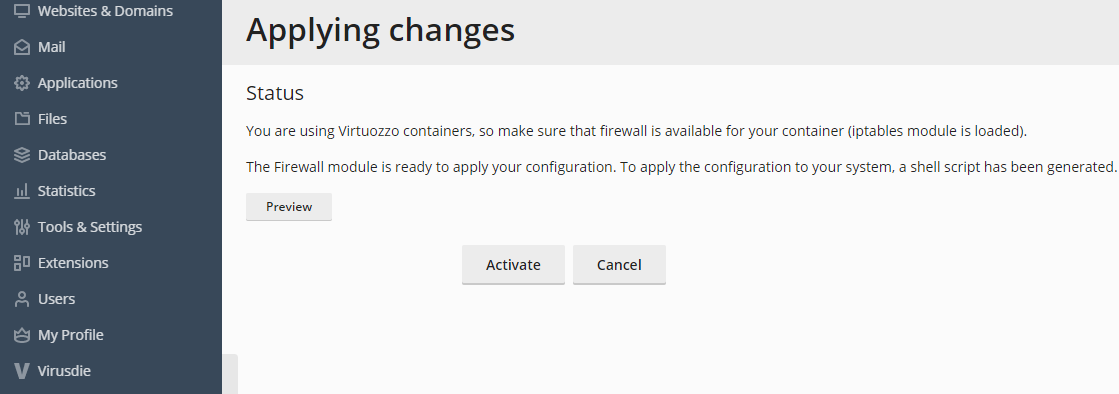
File management – upload new files to the server, manage them, do backups and restores.Domain management – add new domain names, configure and manage them.When it comes to the must-have features, both cPanel and Plesk don’t disappoint. In other words, cPanel puts focus on features first, whereas Plesk puts focus on domains / hosted sites first.Īt the same time, however, Plesk also displays the most top-level settings inside a side panel, which makes them easier to access than in cPanel. in Plesk, you first select the domain and then get to decide what you want to do with it – in this case, assign a new email.in cPanel, you first go to Email and then select the domain that you want to assign the new email account to,.Then, for each site, it displays only the settings and configurations that apply to it.įor example, if you want to add a new email account to a domain name: The Plesk dashboard follows a slightly different model and organizes its features based on the individual sites that you’re hosting on your setup. In other words, when using cPanel, you can be sure that you’re going to find what you need somewhere among the many colorful icons in each section. Even though there’s a lot of sections available, they are very clearly labeled and every area of the panel is easy to get to. The cPanel dashboard seems a bit easier to navigate if it’s your first time interacting with a hosting control panel. The differences are in the details of how you can access given features and how easy to get to they are. User Interfaces And Ease of Useįrom the user’s point of view, both cPanel and Plesk are pretty similar-looking. Plesk was born in 2001 as a response to the Linux-only cPanel and became the primary control panel to be used on Windows-based servers (though it has versions for Linux as well). The older of the two – cPanel – was released in 1996 and soon became the standard for all commercial servers that needed a control panel that could be handed over to casual users. These two hosting control panels are the most popular of their kind, and that’s why we’ve chosen to make them the topic of this comparison. cPanel vs Plesk – Side-By-Side Comparison This means that the end-user can do most of the standard server management tasks on their own. The main benefit of control panels like cPanel and Plesk isn’t only the fact that they allow you to take care of all of the above, but that they do so in an easy-to-comprehend manner. The common things you can do via a hosting control panel are:

The interface is a graphical one, meaning that it’s easy to grasp, and you don’t need to understand the workings under the hood in order to use it effectively. In short, a web hosting control panel gives you a web-based interface to manage your hosting setup. This is everything you need to know about cPanel vs Plesk: What Is a Web Hosting Control Panel Anyway?
PLESK FIREWALL PLUS
Read this to learn all the ins and outs, the similarities and differences between the two, plus get the primer on web hosting control panels in general.

Today, we have a nice deep look into cPanel vs Plesk and compare them side by side. The two are the most popular control panels for web servers and also the very best solutions that the market has to offer. This is where the topic of cPanel vs Plesk comes into play. If you’re just about to pick a web host for your next project, the one thing you might want to consider first is which of the popular web hosting control panels will be better for you.


 0 kommentar(er)
0 kommentar(er)
